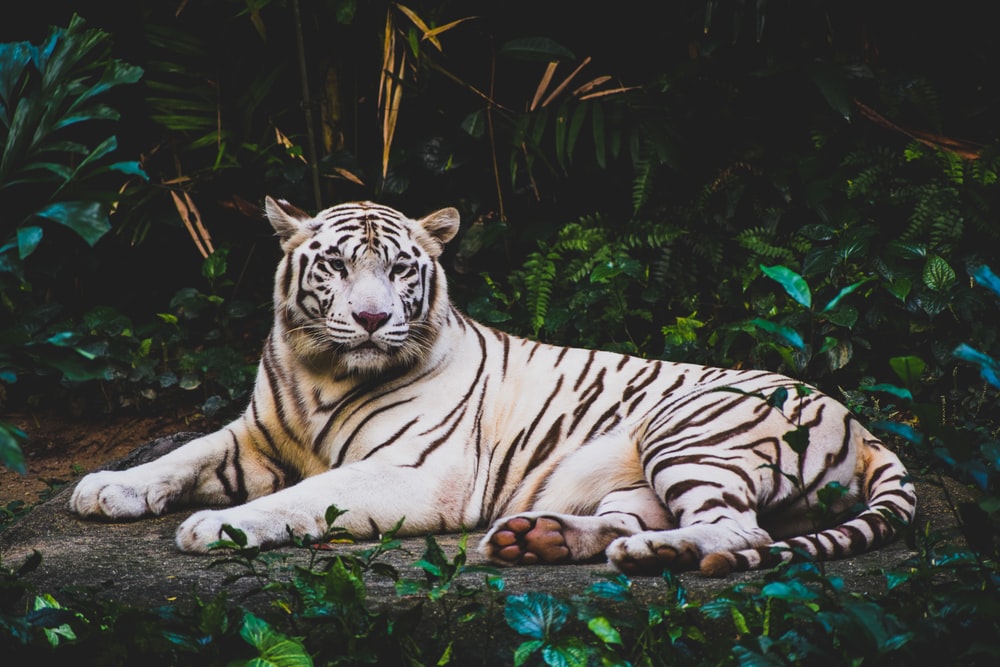ifan-defocus-deblur
Maintainer: codeslake

116

| Property | Value |
|---|---|
| Run this model | Run on Replicate |
| API spec | View on Replicate |
| Github link | View on Github |
| Paper link | View on Arxiv |
Create account to get full access
Model overview
The ifan-defocus-deblur model is an AI-powered tool that removes defocus blur from images. It was developed by codeslake and is based on the research paper "Iterative Filter Adaptive Network for Single Image Defocus Deblurring" published at CVPR 2021. The model uses an iterative filter adaptive network (IFAN) to effectively remove defocus blur from a single input image.
Similar models include background_remover, which removes the background from an image, and lednet, which performs joint low-light enhancement and deblurring. However, the ifan-defocus-deblur model is specifically focused on removing defocus blur, making it a more specialized tool for this task.
Model inputs and outputs
The ifan-defocus-deblur model takes a single input image, which can be in either PNG or JPG format. The model then outputs a deblurred version of the input image.
Inputs
- Image: The input image to be deblurred, which must be in PNG or JPG format.
Outputs
- Deblurred image: The output image with the defocus blur removed.
Capabilities
The ifan-defocus-deblur model is highly effective at removing defocus blur from images. It can handle a variety of blur types and scenes, producing sharp, clear results. The model utilizes an iterative filter adaptive network to adaptively process the input image and remove the blur, resulting in impressive deblurring performance.
What can I use it for?
The ifan-defocus-deblur model can be a valuable tool for photographers, videographers, and imaging professionals who need to fix blurry images caused by defocus. It can be particularly useful for portraits, landscape, and macro photography, where defocus blur is a common issue. By using this model, users can quickly and easily restore sharpness and clarity to their images, improving the overall quality and visual impact.
Additionally, the model could be integrated into various imaging workflows, such as photo editing software or online image processing services, to provide automated defocus deblurring capabilities to a wide range of users.
Things to try
One interesting aspect of the ifan-defocus-deblur model is its ability to handle a variety of blur types, including both uniform and non-uniform defocus blur. This makes it a versatile tool that can be applied to a wide range of blurry images, from portraits with shallow depth of field to landscape shots with uneven focus.
Users could experiment with the model by trying it on a diverse set of images, from close-up macro shots to wide-angle landscape photos, to see how it performs in different scenarios. Additionally, comparing the results of the ifan-defocus-deblur model to other deblurring techniques could provide valuable insights into its strengths and limitations.
This summary was produced with help from an AI and may contain inaccuracies - check out the links to read the original source documents!
Related Models

blur-faces

1
The blur-faces model is a simple AI model that applies a blur filter to input images. This model is similar to other image processing models like ifan-defocus-deblur, which removes defocus blur, and illusions, which can create various visual illusions. The model was created by kharioki. Model inputs and outputs The blur-faces model takes two inputs: an image and a blur radius value. The image is the input that will have a blur filter applied, and the blur radius determines the strength of the blur effect. The model outputs the modified image with the blur filter applied. Inputs Image**: The input image that will have a blur filter applied. Blur**: The radius of the blur filter to apply to the input image. Outputs Output**: The modified image with the blur filter applied. Capabilities The blur-faces model can apply a blur filter to an input image. This can be useful for tasks like obfuscating sensitive information in an image or creating a soft, dreamy effect. What can I use it for? The blur-faces model can be used for a variety of image processing tasks, such as: Blurring sensitive information in images before sharing them Creating a soft, blurred background in portrait photos Simulating a shallow depth of field effect in images Things to try You could try experimenting with different blur radii to achieve different levels of blurring in your images. Additionally, you could combine this model with other image processing models, such as masked-upscaler, to selectively blur only certain areas of an image.
Updated Invalid Date

fooocus

135
fooocus is an image generation model created by vetkastar. It is a rethinking of Stable Diffusion and Midjourney's designs, learning from their strengths while automating many inner optimizations and quality improvements. Users can focus on crafting prompts and exploring images, without needing to manually tweak technical parameters. Similar models include real-esrgan, which provides real-time super-resolution with optional face correction, and a suite of text-to-image models like kandinsky-2, deliberate-v6, reliberate-v3, and absolutereality-v1.8.1 that offer different capabilities and quality tradeoffs. Model inputs and outputs fooocus is a powerful image generation model that can create high-quality images from text prompts. It supports a range of inputs to customize the generation process, including parameters for prompt mixing, inpainting, outpainting, and more. Inputs Prompt**: The text prompt describing the desired image Negative prompt**: Textual descriptions to avoid in the generated image Image prompt**: Up to 4 input images that can be used to guide the generation process Inpaint input image and mask**: An image and mask to perform inpainting on Outpaint selections and distances**: Options to expand the output image in specific directions Various settings**: For adjusting image quality, sharpness, guidance scale, and more Outputs Generated image(s)**: The AI-created image(s) based on the provided inputs Seed(s)**: The random seed(s) used to generate the output image(s) Capabilities fooocus is capable of generating a wide variety of photorealistic and imaginative images from text prompts. It can handle complex compositions, diverse subjects, and creative stylistic choices. The model's automated optimizations and quality improvements help ensure the generated images are visually striking and coherent. What can I use it for? fooocus is a versatile model that can be used for a range of creative and practical applications. Some ideas include: Generating concept art, illustrations, and other visual assets for creative projects Producing custom stock images and visual content for commercial use Experimenting with digital art and exploring new creative directions Visualizing ideas and stories through AI-generated imagery Things to try With fooocus, you can let your imagination run wild and explore the boundaries of what's possible in AI-generated imagery. Try crafting prompts that blend genres, styles, and subjects in unexpected ways. Experiment with the model's inpainting and outpainting capabilities to expand and manipulate the generated images. The possibilities are endless!
Updated Invalid Date

sdxl-lightning-4step

409.9K
sdxl-lightning-4step is a fast text-to-image model developed by ByteDance that can generate high-quality images in just 4 steps. It is similar to other fast diffusion models like AnimateDiff-Lightning and Instant-ID MultiControlNet, which also aim to speed up the image generation process. Unlike the original Stable Diffusion model, these fast models sacrifice some flexibility and control to achieve faster generation times. Model inputs and outputs The sdxl-lightning-4step model takes in a text prompt and various parameters to control the output image, such as the width, height, number of images, and guidance scale. The model can output up to 4 images at a time, with a recommended image size of 1024x1024 or 1280x1280 pixels. Inputs Prompt**: The text prompt describing the desired image Negative prompt**: A prompt that describes what the model should not generate Width**: The width of the output image Height**: The height of the output image Num outputs**: The number of images to generate (up to 4) Scheduler**: The algorithm used to sample the latent space Guidance scale**: The scale for classifier-free guidance, which controls the trade-off between fidelity to the prompt and sample diversity Num inference steps**: The number of denoising steps, with 4 recommended for best results Seed**: A random seed to control the output image Outputs Image(s)**: One or more images generated based on the input prompt and parameters Capabilities The sdxl-lightning-4step model is capable of generating a wide variety of images based on text prompts, from realistic scenes to imaginative and creative compositions. The model's 4-step generation process allows it to produce high-quality results quickly, making it suitable for applications that require fast image generation. What can I use it for? The sdxl-lightning-4step model could be useful for applications that need to generate images in real-time, such as video game asset generation, interactive storytelling, or augmented reality experiences. Businesses could also use the model to quickly generate product visualization, marketing imagery, or custom artwork based on client prompts. Creatives may find the model helpful for ideation, concept development, or rapid prototyping. Things to try One interesting thing to try with the sdxl-lightning-4step model is to experiment with the guidance scale parameter. By adjusting the guidance scale, you can control the balance between fidelity to the prompt and diversity of the output. Lower guidance scales may result in more unexpected and imaginative images, while higher scales will produce outputs that are closer to the specified prompt.
Updated Invalid Date

rembg

73
The rembg model is a powerful tool for removing backgrounds from images. Developed by maintainer ilkerc, it is similar to other background removal models like background_remover, rembg, rembg-enhance, remove-bg, and remove_bg. However, rembg stands out with its high-quality results and user-friendly command-line interface. Model inputs and outputs The rembg model takes an image as input, either by file path, URL, or binary data, and outputs the same image with the background removed. It can also return only the mask, which can be useful for further post-processing. Additionally, the model supports alpha matting, which can produce more natural-looking results. Inputs Image**: The input image to have its background removed. Image URL**: The URL of the input image. Only Mask**: A boolean flag to return only the mask, without the foreground object. Alpha Matting**: A boolean flag to use alpha matting for a more natural-looking result. Outputs Output Image**: The input image with the background removed. Capabilities The rembg model can remove backgrounds from a wide variety of images, including photographs of people, animals, vehicles, and even anime characters. The model is generally accurate and can handle complex backgrounds, although it may struggle with some intricate details or fine edges. What can I use it for? The rembg model is a versatile tool that can be used in a variety of applications, such as: Product photography**: Removing backgrounds from product images to create clean, professional-looking assets. Social media content**: Isolating subjects in images to create engaging visuals for social media platforms. Creative projects**: Extracting subjects from images to use in digital art, photo manipulation, and other creative endeavors. E-commerce**: Automating the process of removing backgrounds from product images to streamline online store operations. Things to try One interesting thing to try with the rembg model is using it in combination with other image processing techniques, such as image segmentation or object detection. By combining these tools, you can create more advanced workflows that allow for even greater control and customization of the background removal process. Another idea is to experiment with the different pre-trained models available, including u2net, u2netp, u2net_human_seg, and u2net_cloth_seg. Each of these models has been optimized for specific use cases, so you may find that one works better than others depending on the type of images you're working with.
Updated Invalid Date